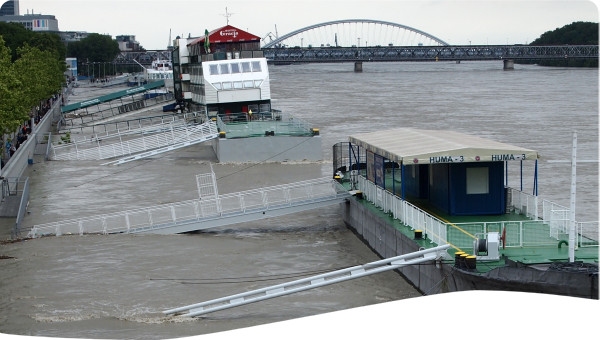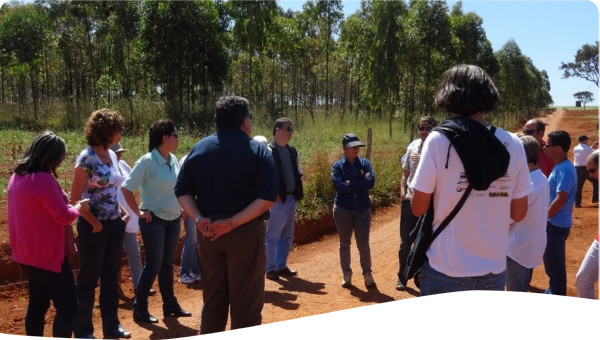The Cuero River area is particularly susceptible to floods, making the communities living in the surrounding area vulnerable. This area was consequently chosen for implementation of an Early Warning System Project. Action was taken in three separate phases in three different areas. From the experience, the lesson learnt is that more effort should be devoted to training of a leader group that can promote and consolidate the system’s self-sufficiency.
In 1997, the implementation of the La Masica Early Warning System (EWS) was launched with the support of the Organization of American States (OEA) and the Honduras Permanent Contingencies Commission (COPECO) through the Flood Vulnerability Reduction and Development of Small Valleys Early Warning System Project.
The Cuero River area was chosen for the implementation of the project since it is vulnerable to floods. More so, its rural population was unprotected from the impact of such natural phenomena as the focus was only based on evacuation at the when floods occurred in the basin’s lower coastal zone.
Subsequently, work was continued on the basin through the Project by Strengthening Local Structures and Early Warning Systems (FEMID) of the German Technical Cooperation (GTZ) which consolidates the technical and social functions of the EWS. This also helps in developing the political, economic, technical and community sustainability of the system and further supports the development of models in other municipalities. The process was developed in three phases, and its last phase was concluded in 2003. The EWS area of influence is made up of approximately 30 small villages located in the high and low regions of the basin with an approximate population of 25,000 inhabitants that benefit directly and indirectly from the system.
In 1995, the OEA’s initiative for implementing the Community EWS´s in Honduras was initiated and was presented to and accepted by COPECO. These systems were first implemented in the Lean River basin located in the Arizona municipality since it met the requirements established by the project. This was the project’s first phase which was successful upon initial implementation.
The OEA initiated a second phase with the implementation of the EWS - La Masica, located in the geographical unit of the Cuero River basin. The focus was on designing and executing social organization training, installation and teaching on the use of the rain gauges and scales as well as the installation of radios together with COPECO. Subsequently, the GTZ through the FEMID continued with the implementation of the EWS in La Masica as part of the Project for Strengthening Local Structures and Early Warning Systems (RELSAT). This project was financed by the Humanitarian Office of the European Economic Community. The office’s work was in Central America and the Central American Natural Disaster Prevention Center was responsible for regional coordination. The main achievement of the RELSAT in the EWS - La Masica was the consolidation of technical and social organization through training and awareness-raising activities carried out from November 1998 to December 1999.
The EWS implementation has generated a sense of unity, identification, and social responsibility for the inhabitants of the Cuero River basin. The success of this project can be replicated for the development of other similar projects in the entire basin geographic area. For instance, reforestation and conservation projects. The EWS structure is legalized through a municipal agreement in the Municipal Corporation and through the CODEM and the Local Emergency Committees within the geographic context of the Cuero River’s basin. The project is considered successful because it is self-sustaining. This success is a product of the joint and permanent efforts of the stakeholders involved such as: the municipal authorities, the municipality’s civil society and international organizations.
In future EWS´s, special social training should be provided in order to form a leader group that promotes and consolidates the system’s self-sufficiency.
The EWS´s should be implemented as multiple warning systems in order to obtain greater social and economic benefits from the system.
The EWS is successful when it has resulted in an evolution from a social organization of improvisation to a culture of preparedness and warning response.
 Case studies
Case studies




